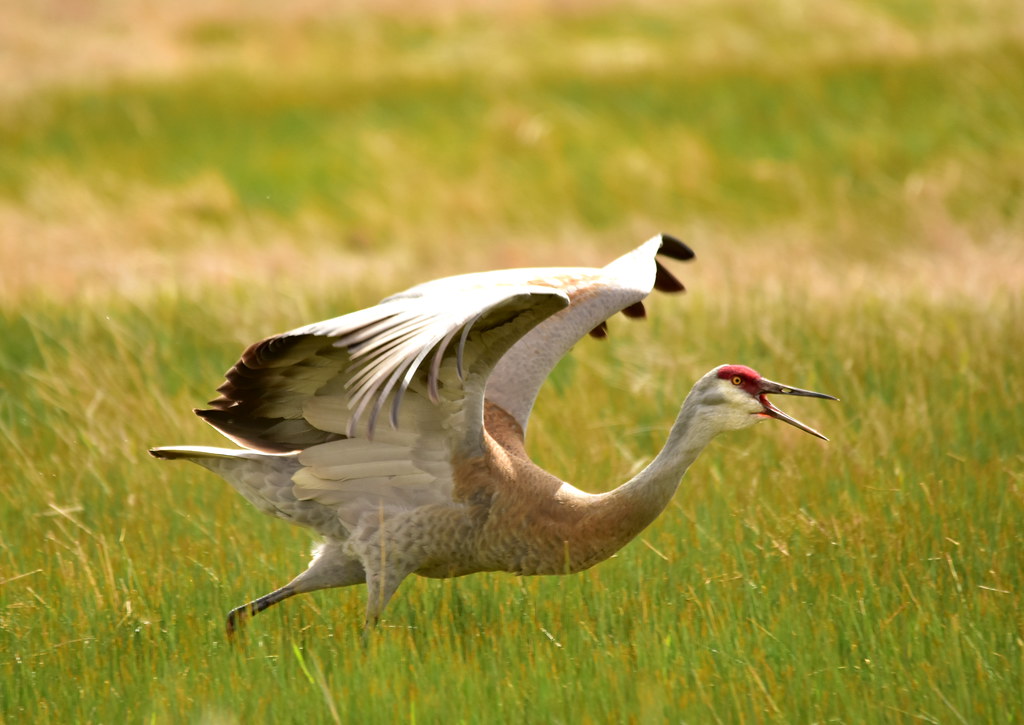Central-Southern US Mixed Grasslands
The ecoregion’s land area is provided in units of 1,000 hectares. The conservation target is the Global Safety Net (GSN1) area for the given ecoregion. The protection level indicates the percentage of the GSN goal that is currently protected on a scale of 0-10. N/A means data is not available at this time.
Bioregion: Southern Prairie Mixed Grasslands (NA20)
Realm: Northern America
Ecoregion Size (1000 ha):
27,545
Ecoregion ID:
389
Conservation Target:
11%
Protection Level:
1
States: United States: NE, KS, OK, TX
The large Central-Southern US Mixed Grasslands ecoregion forms an ecological transition from tallgrass to shortgrass prairie. From north to south, its eastern boundary abuts the Central Tallgrass, Flint Hills Tallgrass, and Cross-Timber Savanna-Woodland ecoregions. To the south lies the Edwards Plateau Savanna, to the west the Western Shortgrass Prairie, and to the north and northwest the Nebraska Sand Hills Mixed Grasslands ecoregions. The Central-Southern US Mixed Grasslands ecoregion is flat to rolling with loessal (wind-deposited) plains and hills, ranging from around 400 to 1,220 m in elevation.
The ecoregion was so heavily cultivated, and is so drought-prone, that much of the topsoil was blown away in dust storms during the Dust Bowl period of the 1930s. Although the native grasslands have partially recovered, many of them are overgrazed by cattle.

The flagship species of the Central-Southern US Mixed Grasslands ecoregion is the sandhill crane. Image credit: Courtesy of USFWS Mountain Prairie
The climate of the Central-Southern US Mixed Grasslands ecoregion ranges from subhumid warm continental to subhumid warm temperate. Annual average precipitation ranges from around 300 mm to 812 mm. The native mixed-grass prairie is dominated by a mixture of tallgrasses, especially big bluestem and Indiangrass, with an understory of mid (intermediate) grasses such as little bluestem, western wheatgrass, sideoats grama, and Junegrass, and shortgrasses, primarily blue grama and buffalograss. Tallgrasses are most abundant on lower slopes and bottoms, with midgrasses and shortgrasses dominating upper slopes and ridgetops. Grazing, originally by Plains bison but today mostly by cattle, produces greater dominance by shortgrasses.
Many other grasses, as well as sedges and forbs (broad-leaved herbaceous plants), occupy the mixed-grass prairie, lending it the greatest floristic complexity of all North American grasslands. Common forbs include western ragweed, fringed sage, prairie coneflower, scarlet globe mallow, scarlet gaura, among others. The maximum observable plant diversity occurs about half-way through the growing season, when plant biomass is somewhat evenly distributed between cool-season (early) and warm-season (late) species. Drought can reduce the density and cover of shortgrasses by up to 70–80% and of forbs by nearly 100%.
Unfortunately, invasive non-native plants such as smooth brome, cheatgrass, and Kentucky bluegrass are abundant today, and in some areas eastern redcedar is a problematic invasive. Fire, along with herbivory, is an important agent of natural disturbance in the mixed-grass prairie. The presettlement fire-return interval was approximately 5–10 years, with both lightning and Native Americans as ignition sources.
.jpg)
Sandhill cranes. Image credit: Great Sand Dunes National Park and Preserve, Creative Commons
This ecoregion has a relatively rich native grassland bird community, including greater prairie-chicken (now uncommon), upland sandpiper, Swainson’s hawk, prairie falcon (in winter), horned lark, chestnut-collared and McCown’s longspurs (southern part, in winter), Cassin’s and rufous-crowned sparrows (southern part), dickcissel, western meadowlark, and bobolink. The endangered black-capped vireo nests in brushy areas with scattered trees in the southern portion of the region. More than 500,000 sandhill cranes—about 80% of the world’s population—gather along Nebraska’s Platte River during migration, one of the most amazing wildlife spectacles on the continent.
Distinctive mammals are black-tailed prairie dog, American badger, and plains bison, which was nearly driven to extinction but subsequently reintroduced to some areas. A successful reintroduction of plains bison to Wichita Mountains National Wildlife Refuge, near Lawton, Oklahoma, began in 1907 with stock from what is now the Bronx Zoo.
Although only 1% of the ecoregion is currently protected, at least 13% of the area outside protected areas is in relatively natural condition. Priority conservation actions for the next decade are to: 1) expand the existing protected areas in the ecoregion and acquire additional areas to better represent the full range of ecosystem types and provide enhanced connectivity among reserves; 2) improve management of existing conservation lands as well as private lands, for example by reducing stocking densities of cattle where appropriate; and 3) control invasive non-native species.
Citations
1. Sims, P.L., and P.G. Risser. 2000. Grasslands. Pages 323-356 in M.G. Barbour and W.D. Billings, eds. North American Terrestrial Vegetation, 2nd edition. Cambridge University Press, Cambridge, U.K.
2. Ricketts, T.H. et al. 1999. Terrestrial Ecoregions of North America: A Conservation Assessment. Island Press, Washington, D.C.
3. Rapid Assessment Reference Condition Model. Southern Mixed Grass Prairie. LANDFIRE. https://www.fs.fed.us/database/feis/pdfs/PNVGs/Northern_Plains/R4PRMGs.pdf



